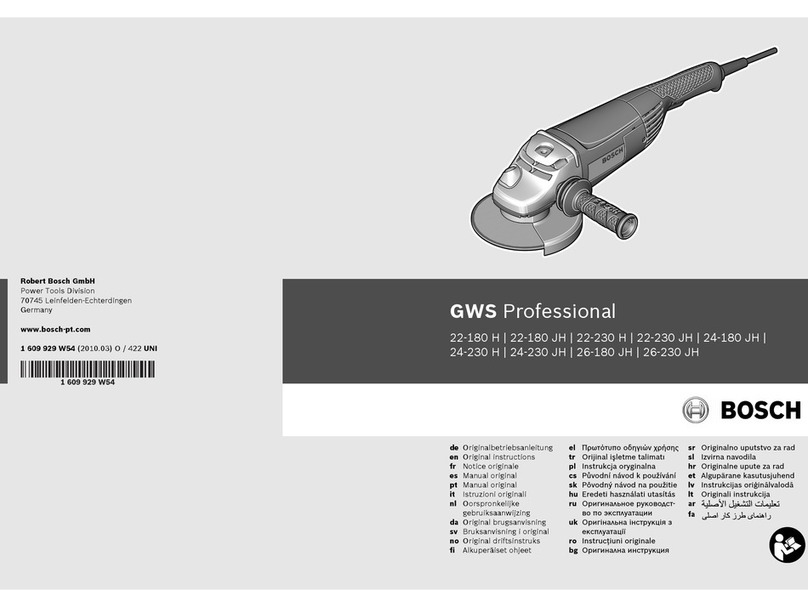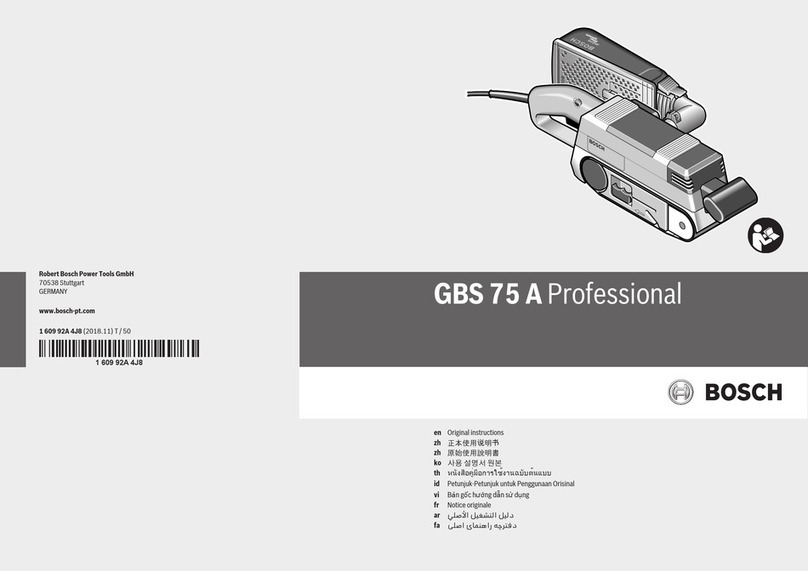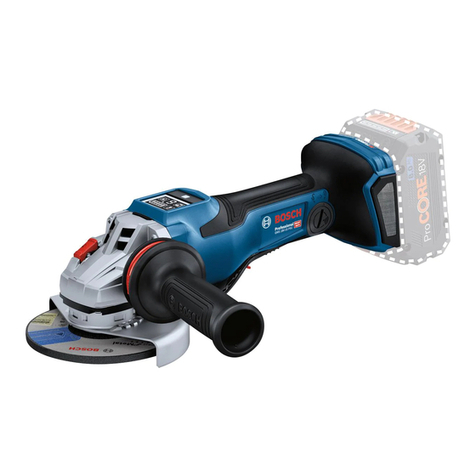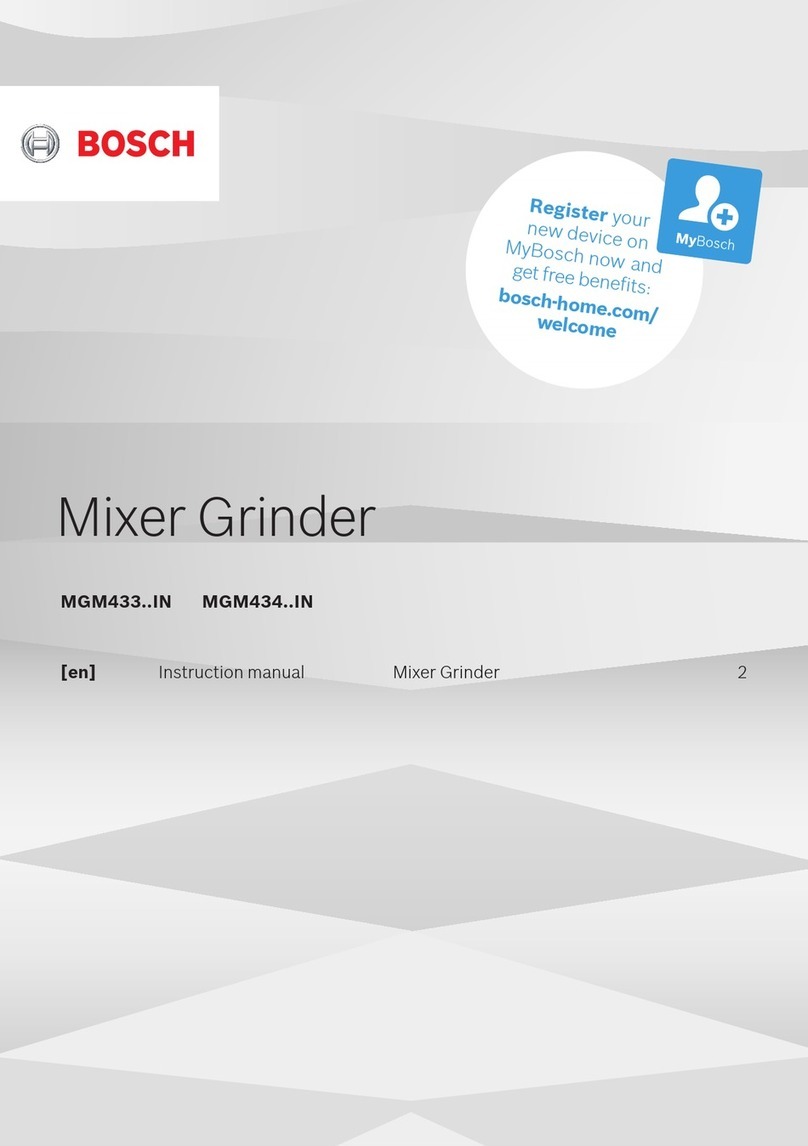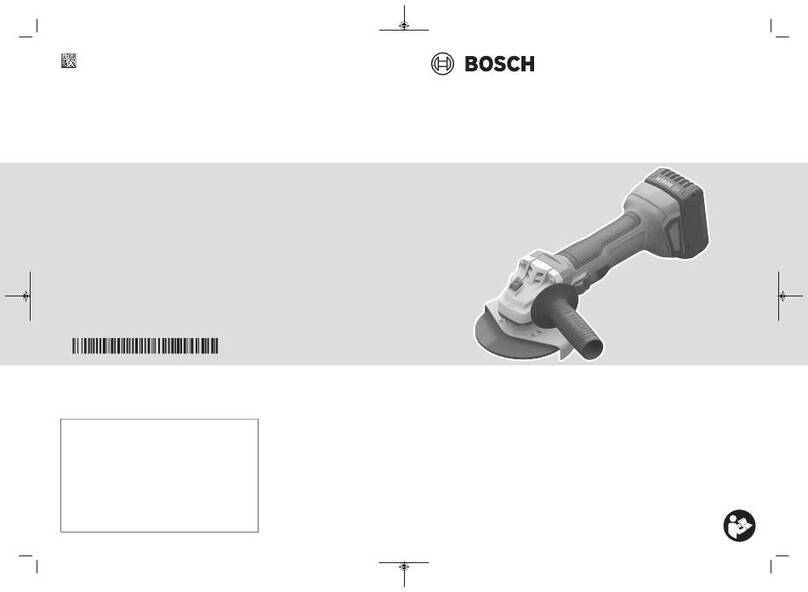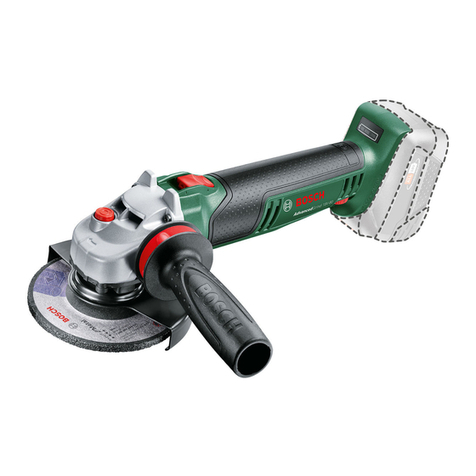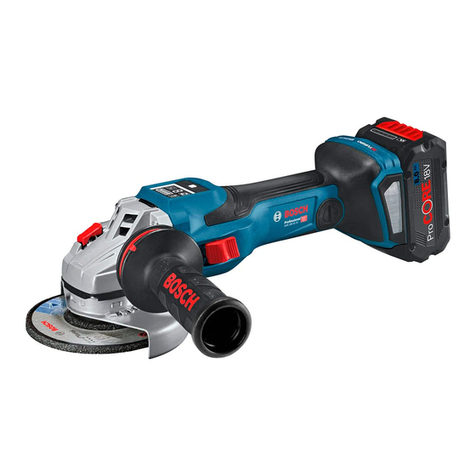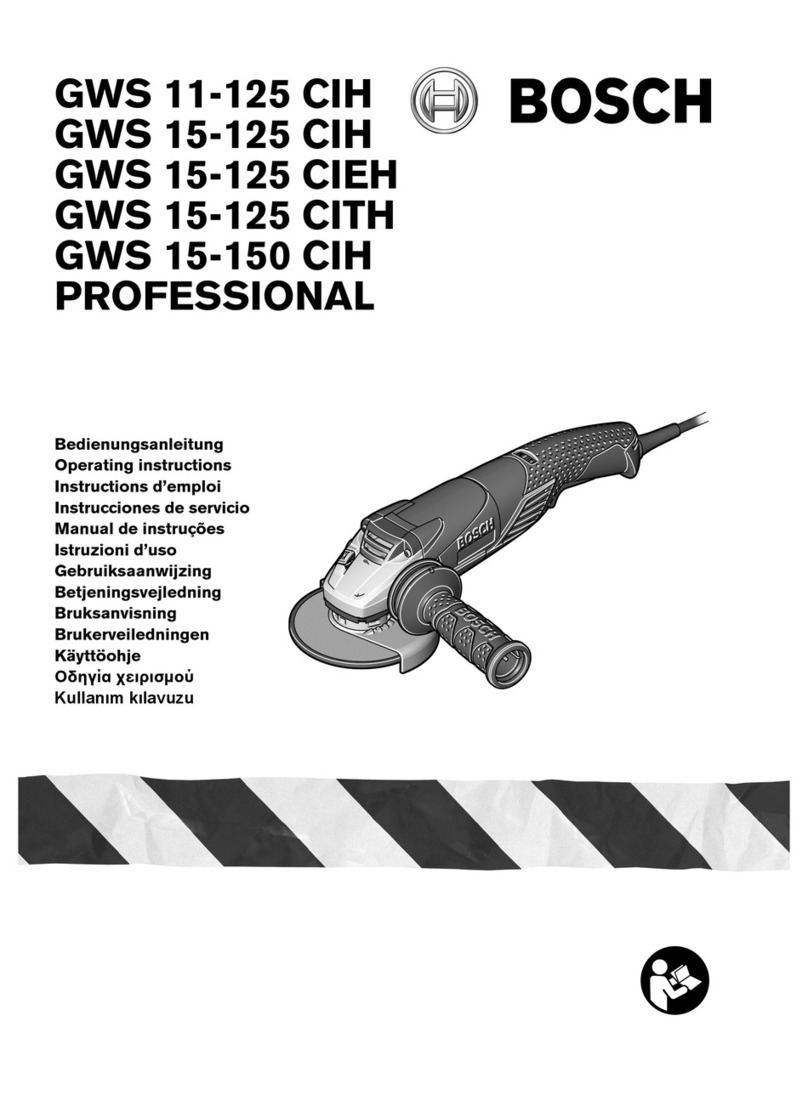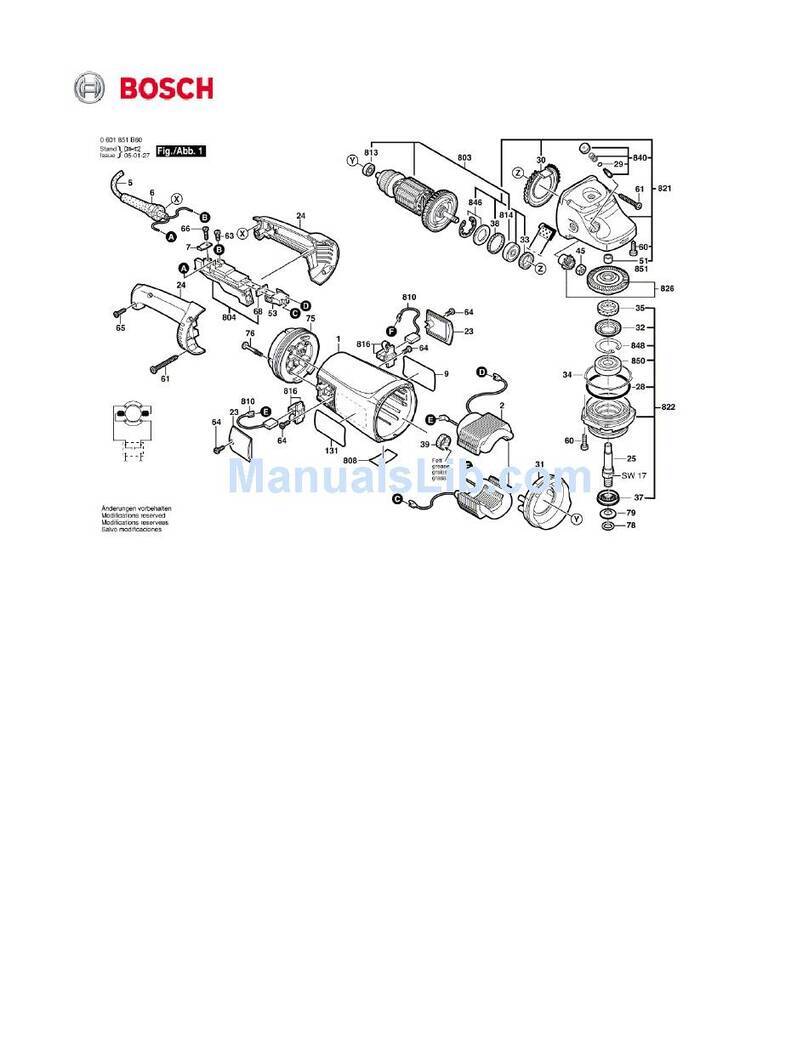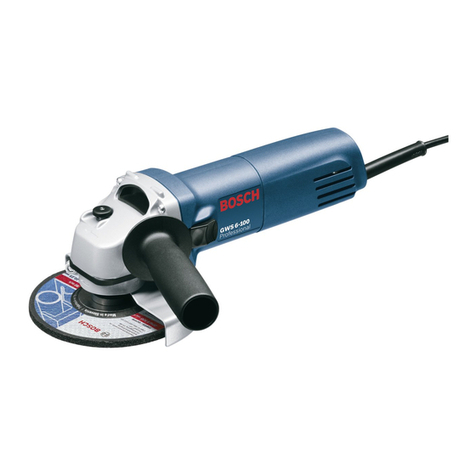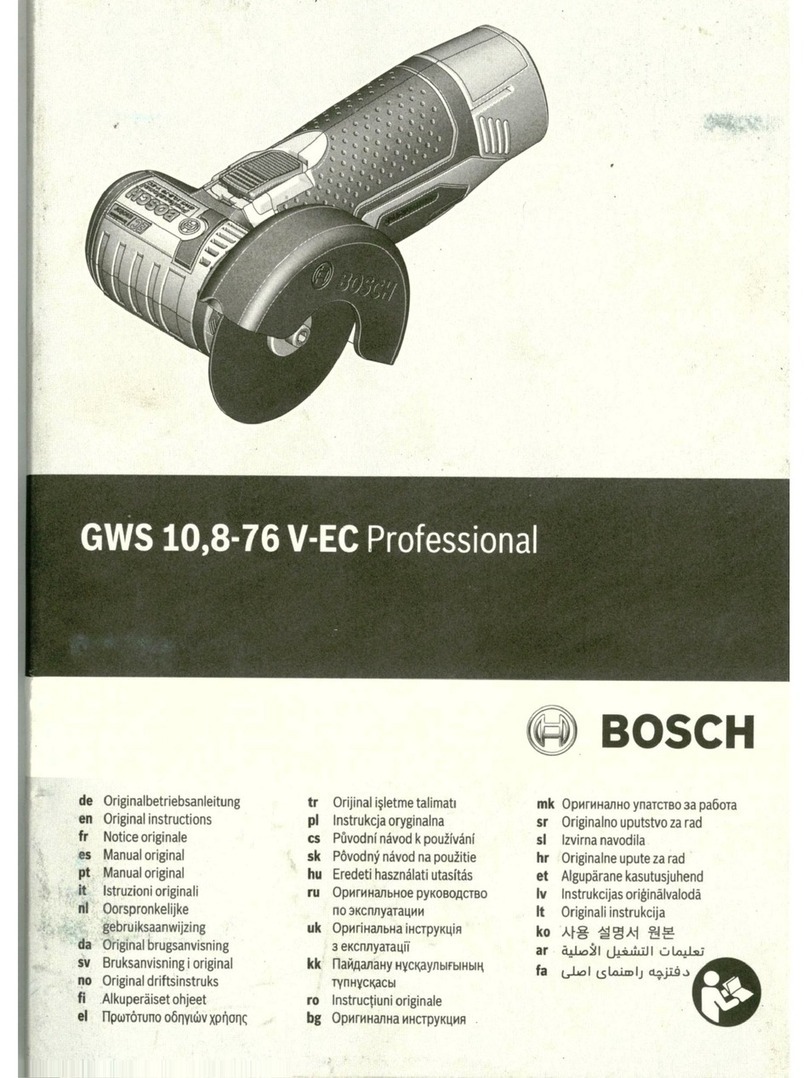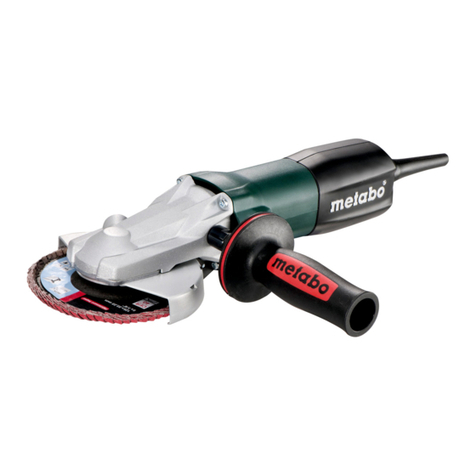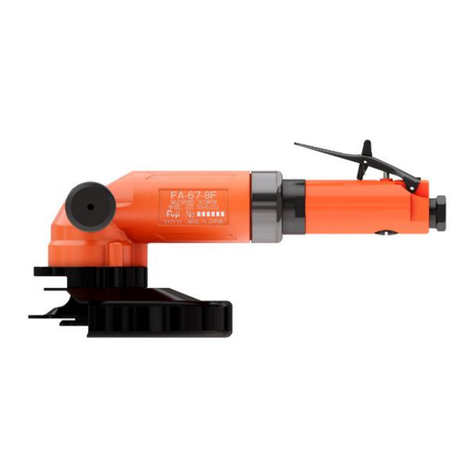
6| Deutsch
1 609 92A 0J8 | (17.2.14) Bosch Power Tools
weglegen. Diese Vorsichtsmaßnahme verhindert den un-
beabsichtigten Start des Elektrowerkzeuges.
Bewahren Sie unbenutzte Elektrowerkzeuge außer-
halb der Reichweite von Kindern auf. Lassen Sie Perso-
nen das Gerät nicht benutzen, die mit diesemnicht ver-
traut sind oder diese Anweisungen nicht gelesen
haben. Elektrowerkzeuge sind gefährlich, wenn sie von
unerfahrenen Personen benutzt werden.
Pflegen Sie Elektrowerkzeuge mit Sorgfalt. Kontrollie-
renSie,ob bewegliche Teileeinwandfrei funktionieren
und nicht klemmen, ob Teile gebrochen oder so be-
schädigt sind, dass die Funktion des Elektrowerkzeu-
gesbeeinträchtigtist.Lassen Sie beschädigte Teilevor
demEinsatzdesGerätesreparieren.VieleUnfälle haben
ihre Ursache in schlecht gewarteten Elektrowerkzeugen.
Halten Sie Schneidwerkzeuge scharf und sauber. Sorg-
fältig gepflegte Schneidwerkzeuge mit scharfen Schneid-
kanten verklemmen sich weniger und sind leichter zu füh-
ren.
Verwenden Sie Elektrowerkzeug, Zubehör, Einsatz-
werkzeuge usw. entsprechend diesen Anweisungen.
BerücksichtigenSiedabeidieArbeitsbedingungenund
die auszuführende Tätigkeit. Der Gebrauch von Elektro-
werkzeugen für andere als die vorgesehenen Anwendun-
gen kann zu gefährlichen Situationen führen.
Service
Lassen Sie Ihr Elektrowerkzeug nur von qualifiziertem
Fachpersonal und nur mit Original-Ersatzteilen repa-
rieren. Damit wird sichergestellt, dass die Sicherheit des
Elektrowerkzeuges erhalten bleibt.
Sicherheitshinweise für Trennschleifmaschinen
Die zum Elektrowerkzeug gehörende Schutzhaube
muss sicher angebracht und so eingestellt sein, dass
ein Höchstmaß an Sicherheit erreicht wird, d. h. der
kleinstmögliche Teil des Schleifkörpers zeigt offen zur
Bedienperson. Halten Sie und in der Nähe befindliche
Personen sich außerhalb der Ebene der rotierenden
Schleifscheibe auf. Die Schutzhaube soll die Bedienper-
son vor Bruchstücken und zufälligem Kontakt mit dem
Schleifkörper schützen.
Verwenden Sie ausschließlich gerade verstärkte
Trennscheiben für Ihr Elektrowerkzeug. Nur weil Sie
das Zubehör an Ihrem Elektrowerkzeug befestigen kön-
nen, garantiert das keine sichere Verwendung.
Die zulässige Drehzahl des Einsatzwerkzeugs muss
mindestens so hoch sein wie die auf dem Elektrowerk-
zeug angegebene Höchstdrehzahl. Zubehör, das sich
schneller als zulässig dreht, kann zerbrechen und umher-
fliegen.
Schleifkörper dürfen nur für die empfohlenen Einsatz-
möglichkeiten verwendet werden. Z. B.: Schleifen Sie
nie mit der Seitenfläche einer Trennscheibe. Trenn-
scheiben sind zum Materialabtrag mit der Kante der Schei-
be bestimmt. Seitliche Krafteinwirkung auf diese Schleif-
körper kann sie zerbrechen.
Verwenden Sie immer unbeschädigte Spannflansche
in der richtigen Größe für die von Ihnen gewählte
Schleifscheibe. Geeignete Flansche stützen die Schleif-
scheibe und verringern so die Gefahr eines Schleifschei-
benbruchs.
VerwendenSiekeine abgenutztenSchleifscheibenvon
größeren Elektrowerkzeugen. Schleifscheiben für grö-
ßereElektrowerkzeuge sind nicht für die höheren Drehzah-
len von kleineren Elektrowerkzeugen ausgelegt und kön-
nen brechen.
Außendurchmesser und Dicke des Einsatzwerkzeugs
müssen den Maßangaben Ihres Elektrowerkzeugs ent-
sprechen. Falsch bemessene Einsatzwerkzeuge können
nicht ausreichend abgeschirmt oder kontrolliert werden.
Schleifscheiben und Flansche müssen genau auf die
Schleifspindel Ihres Elektrowerkzeugs passen. Einsatz-
werkzeuge,dienichtgenauauf die Schleifspindel des Elek-
trowerkzeugs passen, drehen sich ungleichmäßig, vibrie-
ren sehr stark und können zum Verlust der Kontrolle
führen.
Verwenden Sie keine beschädigten Schleifscheiben.
Kontrollieren Sie vor jeder Verwendung die Schleif-
scheiben auf Absplitterungen und Risse. Wenn das
Elektrowerkzeug oder die Schleifscheibe herunter-
fällt, überprüfen Sie, ob es beschädigt ist, oder ver-
wenden Sie eine unbeschädigte Schleifscheibe. Wenn
Sie die Schleifscheibe kontrolliert und eingesetzt ha-
ben, halten Sie und in der Nähe befindliche Personen
sich außerhalb der Ebene der rotierenden Schleifschei-
be auf und lassen Sie das Gerät eine Minute lang mit
Höchstdrehzahl laufen. Beschädigte Schleifscheiben
brechen meist in dieser Testzeit.
Tragen Sie persönliche Schutzausrüstung. Verwenden
Sie je nach Anwendung Vollgesichtsschutz, Augen-
schutz oder Schutzbrille. Soweit angemessen, tragen
Sie Staubmaske, Gehörschutz, Schutzhandschuhe
oder Spezialschürze, die kleine Schleif- und Material-
partikel von Ihnen fernhält. Die Augen sollen vor herum-
fliegenden Fremdkörpern geschützt werden, die bei ver-
schiedenen Anwendungen entstehen. Staub- oder
Atemschutzmaskemüssen den bei der Anwendung entste-
henden Staub filtern. Wenn Sie lange lautem Lärm ausge-
setzt sind, können Sie einen Hörverlust erleiden.
AchtenSie bei anderen Personen auf sicheren Abstand
zu Ihrem Arbeitsbereich. Jeder, der den Arbeitsbe-
reich betritt, muss persönliche Schutzausrüstung tra-
gen. Bruchstücke des Werkstücks oder gebrochener Ein-
satzwerkzeuge können wegfliegen und Verletzungen auch
außerhalb des direkten Arbeitsbereichs verursachen.
Halten Sie das Gerät nur an den isolierten Griffflächen,
wenn Sie Arbeiten ausführen, bei denen das Einsatz-
werkzeug verborgene Stromleitungen oder das eigene
Netzkabel treffen kann. Der Kontakt mit einer span-
nungsführenden Leitung kann auch metallene Geräteteile
unter Spannung setzen und zu einem elektrischen Schlag
führen.
Halten Sie das Netzkabel von sich drehenden Einsatz-
werkzeugen fern. Wenn Sie die Kontrolle über das Gerät
OBJ_BUCH-280-004.book Page 6 Monday, February 17, 2014 2:43 PM



